Architecture on the Road
EXPLORING PHNOM PENH’S ARCHITECTURE
Phnom Penh was the first city I visited during my two week trip in Cambodia. I was absolutely intrigued by the city’s historical and architectural sites, but did not have any other tremendous expectations for the Cambodian capital as I was eager to get to Siem Reap and visit the wondrous Angkor Wat archeological park! Phnom Penh was surprisingly pleasant and charming, and the decision to dedicate first weekend of the trip to this bustling city proved to be spot on. During these days, I was able to visit the most important places in complete tranquility, leaving a very positive feeling of the city.
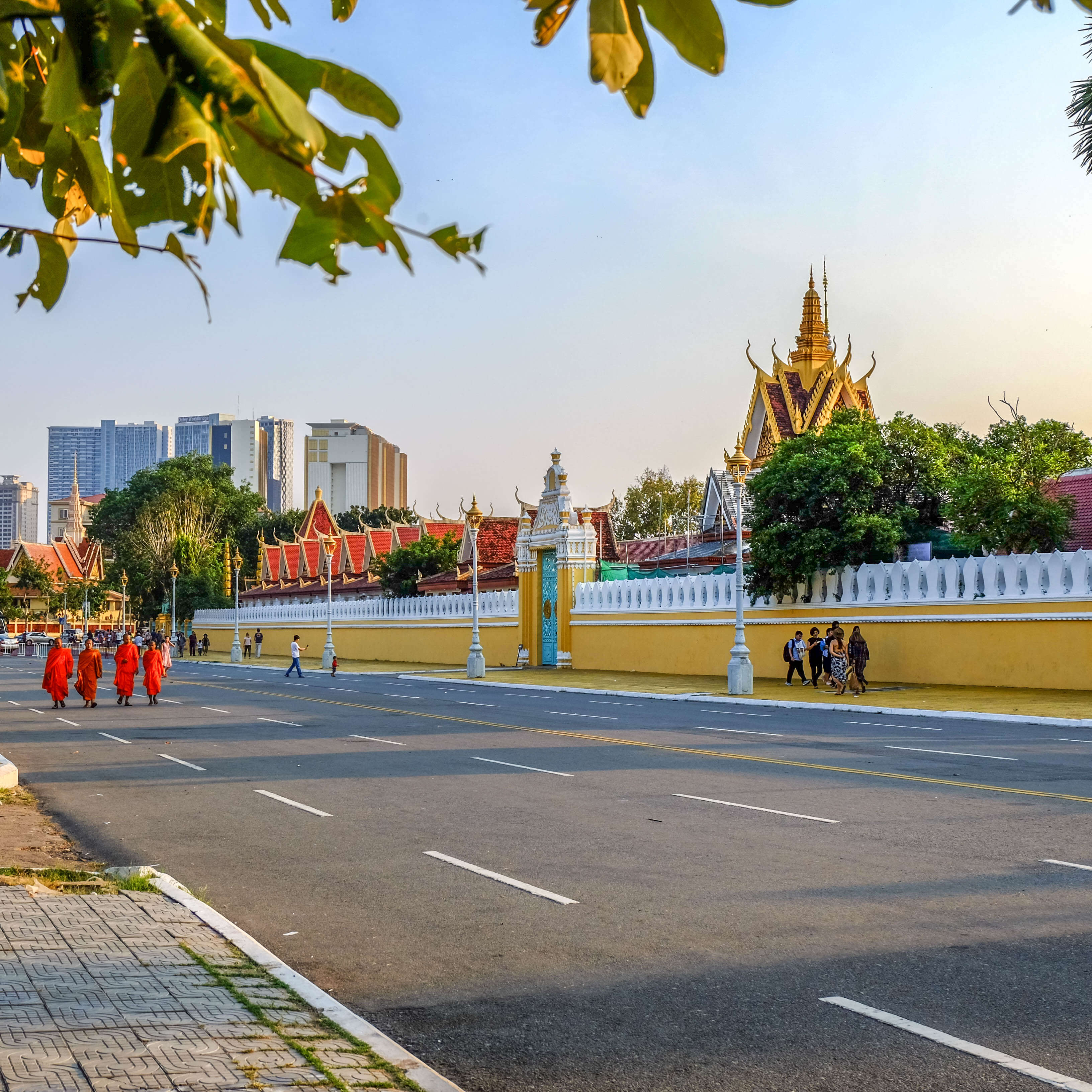
With about 3 million inhabitants, Phnom Penh is the largest and most populated city in the country, serving as the main gateway for Cambodian travel.
Founded in 1372, it became the capital of Cambodia in 1440; experiencing a turbulent history in the proceeding centuries. Razed at the end of the 18th century by the Thais, it became a French colony in 1863, gaining independence about a century later. In 1975 it was occupied by the Khmer Rouge, evacuated, and inhabited by soldiers. Pnomh Penh became home to notorious extermination camps, where thousands of Cambodians were massacred at the killing fields during Pol Pot’s regime. When the regime was toppled by the Vietnamese armed forces, Cambodia became the People’s Republic of Kampuchea, a satellite state of Vietnam. Only in 1991, after the withdrawal of the vietnamese troops, did Pnomh Penh retain it’s status as capital of the Kingdom of Cambodia as we know it now.
The city, as we see it today, displays sumptuous buildings in traditional Khmer style and French colonial architecture, especially for the most central residential areas.
PRACTICAL TIPS FOR VISITING PHNOM PENH
- There are two currencies in Cambodia: Cambodian Riel and United States Dollar. USD is used as an everyday currency within the country, and is easier to handle in large amounts than Riel (1USD = 4000 riels). For change smaller than 1 dollar, only Cambodian Riel is used.
- To get around Phnom Penh, we rented a scooter. We drive scooters in our daily lives at home, and when we travel, we like the freedom a scooter offers for our itinerary. To navigate we use Google Maps or Maps.me (you can easily get a Cambodian simcard outside the arrival terminal at the airport).
- The other option to get around is hiring a tuk-tuk driver for the day. For a few dollars they will drop you somewhere, or you can hire one for the day for 15-20 dollars (and you will also enjoy the shade and the wind during your ride, which is really relaxing). Pro tip: You can also download Pass App, it’s the tuk tuk Uber of Cambodia and offers the best price.
- The temperature can be very hot in the middle of the day (we visited the country in the middle of the dry season), so it’s better to have an early start!
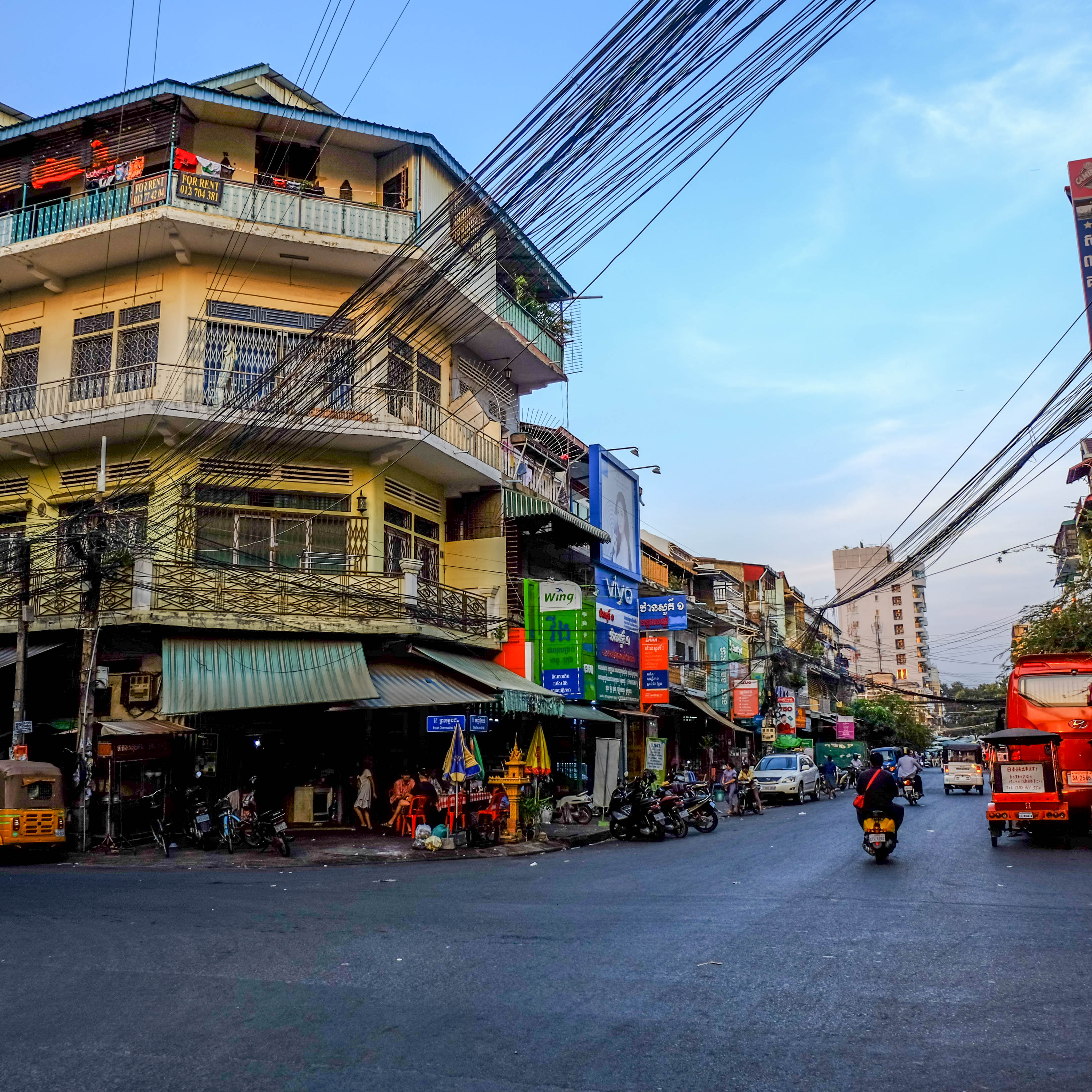
WHAT TO SEE IN PHNOM PENH
I believe a minimum of 2 days is a decent amount of time to visit the must see attractions and get a general impression of the city and it’s architectural heritage.
Phnom Penh is a city with a long history, but the architecture we can admire today, mostly dates back to the last two centuries.
While strolling around Phnom Penh city center, it is possible to spot 4 main architectural styles:
NEW KHMER ARCHITECTURE
This itinerary is designed to experience and appreciate the different architectural styles of the city center. It can be done in 1 full day, both by walk or by scooter.
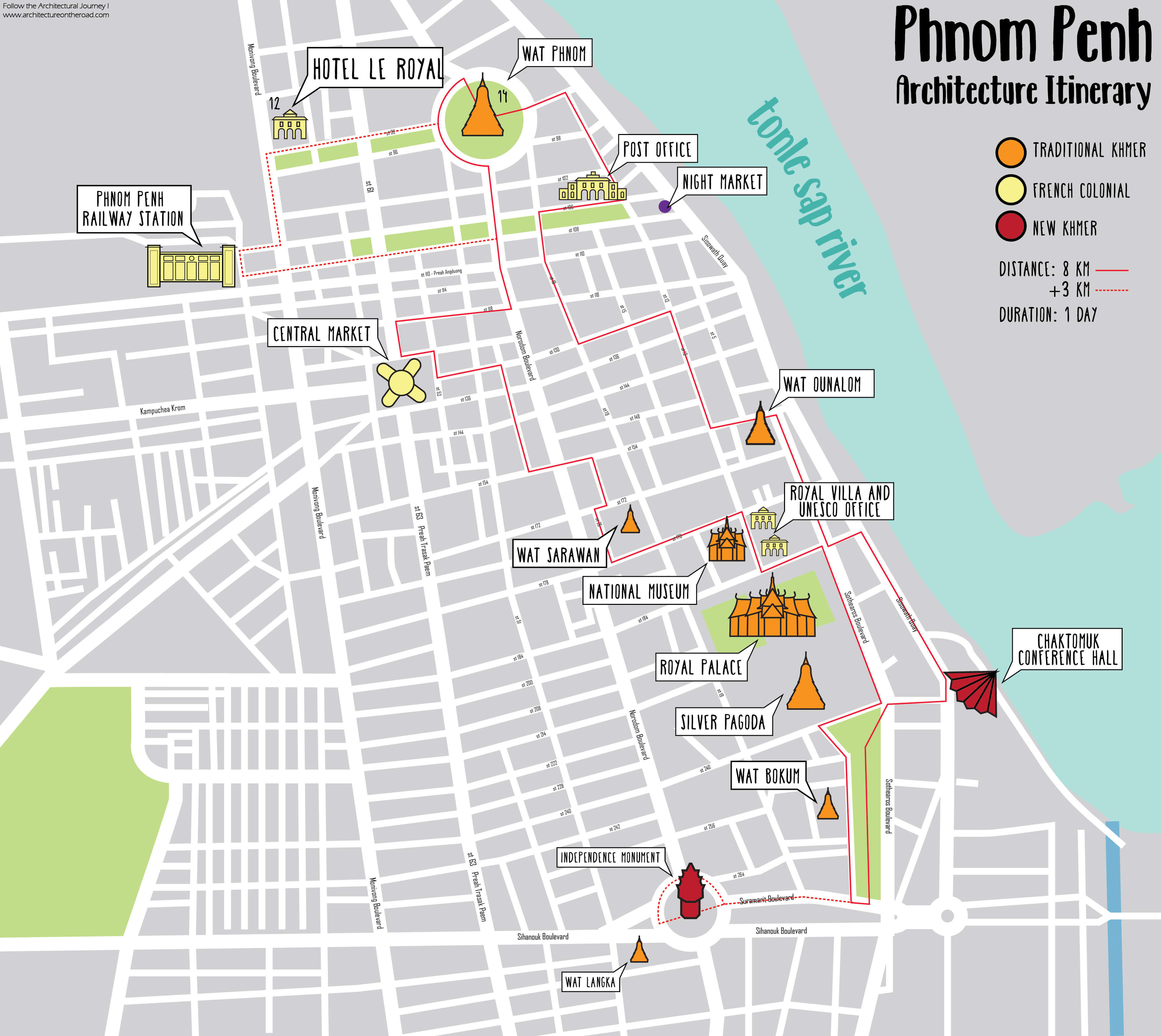
PHNOM PENH TRADITIONAL KHMER ARCHITECTURE
The traditional Khmer Architecture is undoubtedly the style that embodies the identity of the country.
It is mainly used for government and religious buildings, the Royal Palace being the most splendid example, but is also used for many temples, representative buildings, institutes, newly built luxury hotels etc….
The main characteristics of this traditional style are common throughout many of the countries of South East Asia.
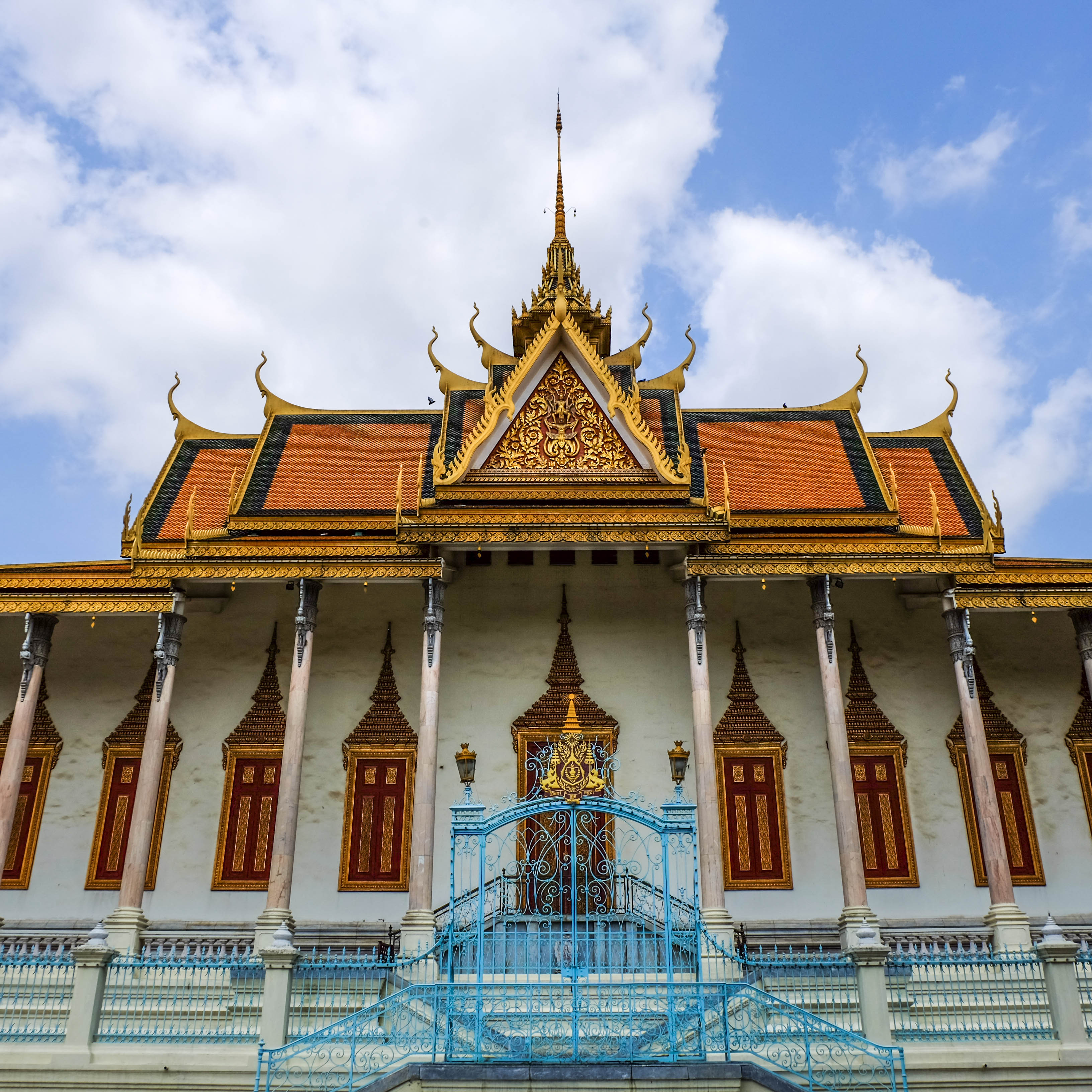
The most recognizable features are:
- Superimposed roof structures, made by multiple roof tiers, featuring sloping and curved tiled surfaces. This kind of roof is mostly used for temples and royal palaces, but can also be found in representative buildings. The graceful slope of multiple roof tiers creates a less imposing feature to lighten up the roof’s appearance. Because of the large dimensions of the building, the roof would look extremely large and difficult to differentiate from the building. This solution creates a more dynamic visual rhythm of the roof surfaces, adding an aesthetic flow to the structure as a whole.
- Roofs usually have high gables, often finely decorated with golden leafs. The roofs are also characterized by curved and upturned finials at the ends of the ridge poles.
It’s common to find colonnades around the main pavilions, decorated columns that stretch from the floor to the capital on the overhanging roof. Around the walls, architectural elements such as doors and windows richly adorned with golden leafs, ceramic tiles or mosaics, and flame-like motives can be seen. - Stupas are common sights throughout the country, and consist of funerary, reliquary and votive monuments in Buddhist culture. Their shape varies from one Asian country to another, but these buildings are typically found around temples and religious sites, as they are often used as graves and mausoleums. The form, dimension, and decoration of the stupa varies according to the wealth of the family.
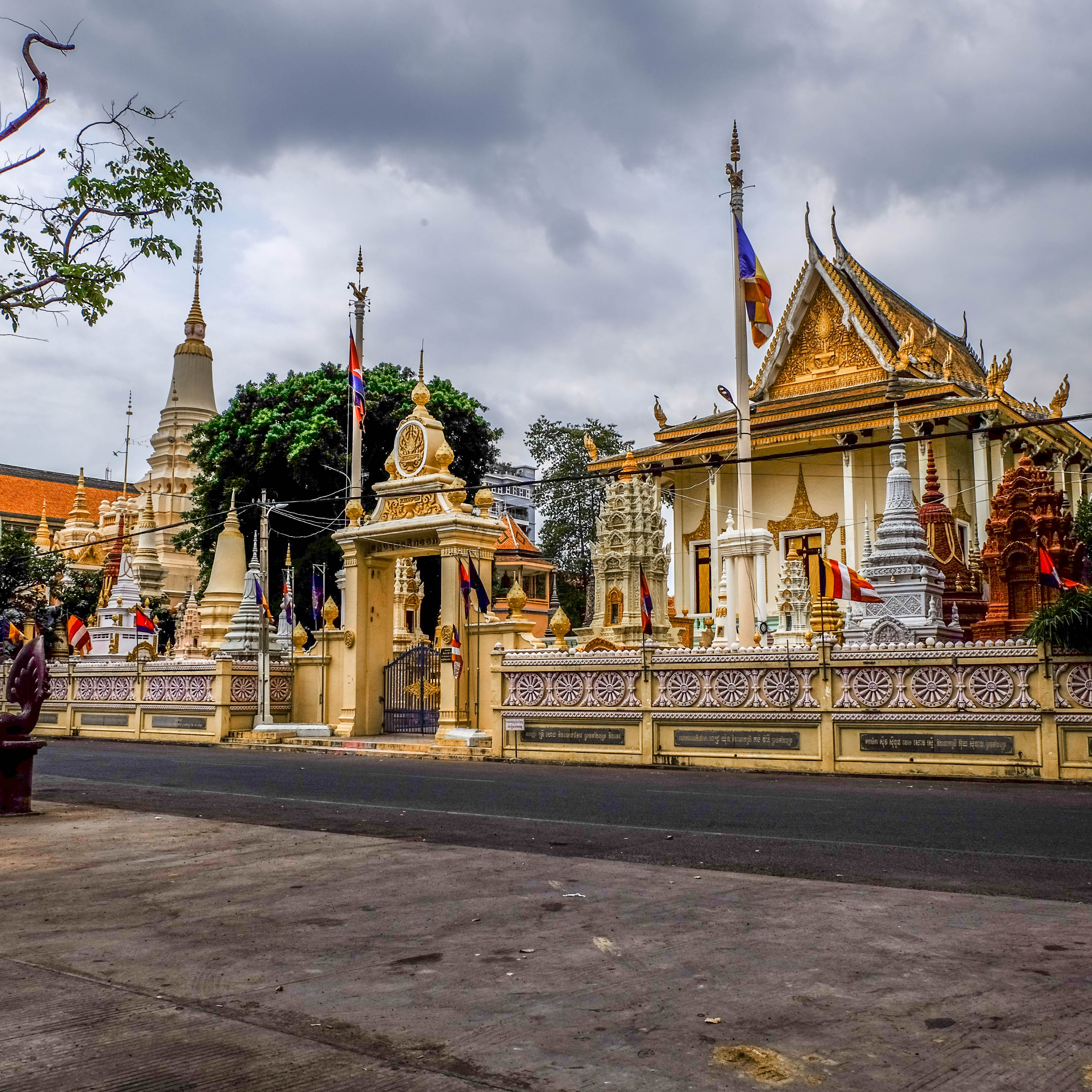
- Naga statues are mythological characters present in all the Asian cultures. The word ‘Naga’ derives from Sanskrit’s “snake,” an animal which holds much symbolic meaning.
These mythic characters are commonly seen in Hinduism and Buddhism, and are very often represented in temples and important sites related to these religions.
The mythological reptile beings are divine, or semi-divine, creatures closely conected to the water element. They often boast magic powers, and are usually represented in 3 forms: snakes, such as cobras or pitons, with multiple heads; half-human, half-snake beings; and humans with snakes attached to their heads or neck.
The reptile is the consistent feature, but several variations can be found in every Asian country. In Hindu cultures such as India and Nepal, Nagas are considered water-dwelling spirits, protecting bodies of water like rivers, lakes, seas, and wells. In Thailand, Nagas are underworld deities. And in Laos, Nagas are respected water serpents. In China the figure of the snake can be traced through the history of dragon symbology.
Nagas are especially dear to Cambodian culture, as Cambodians consider themselves: “born from Nagas.” The legend says that the Khmer people were born from the marriage between the King of Ancient Cambodia and the daughter of the King of the Naga People.
In Cambodia, Nagas are often represented as seven-headed statues, abundantly adorning balustrades, staircases, bridges and gates. The 7 heads hold a specific symbolic meaning. The odd-headed nagas symbolize the infinity and immortality associated with the male energy, while the even-headed nagas symbolize the temporality and mortality of the female energy.
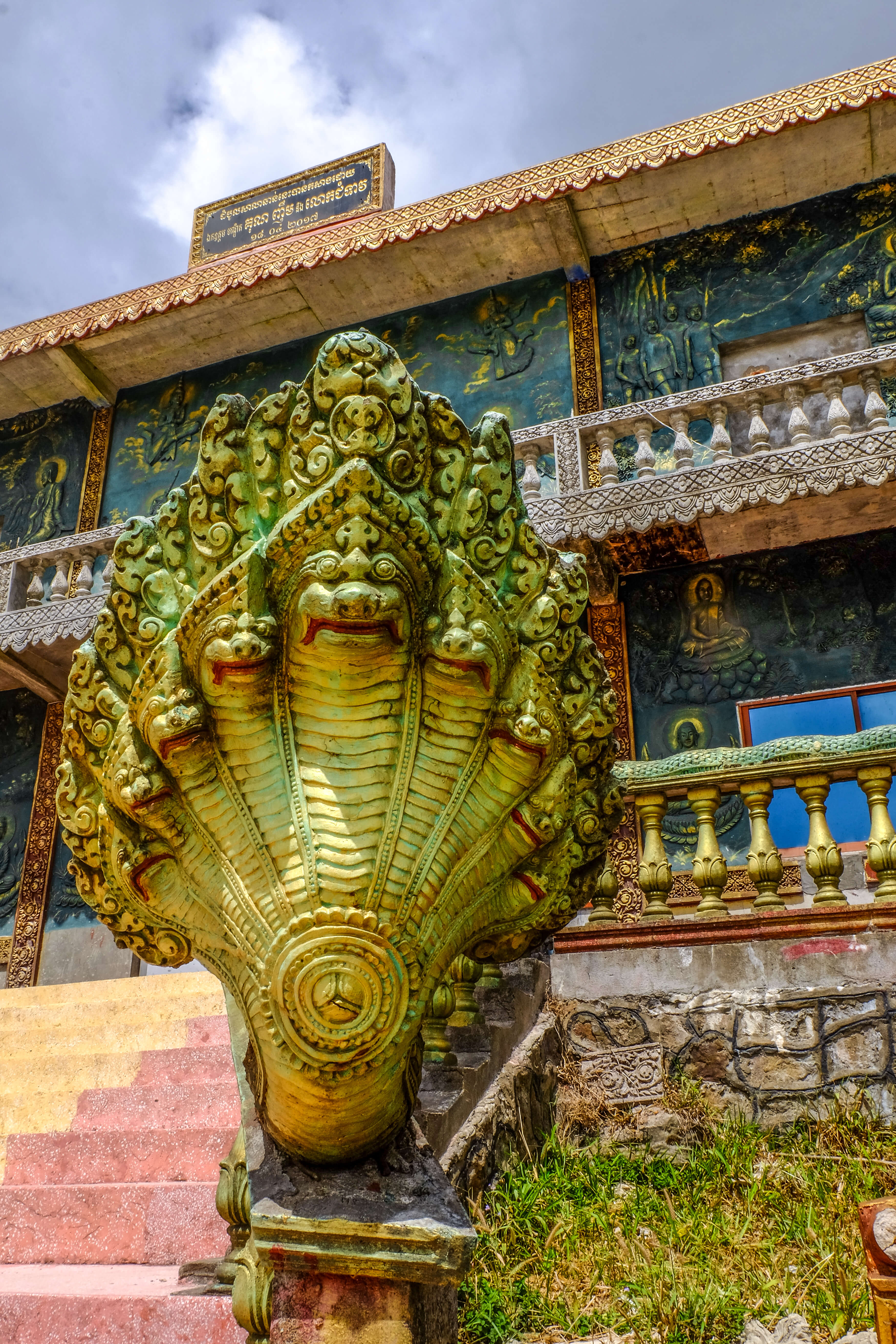
TRADITIONAL KHMER ARCHITECTURE: MUST SEE PLACES IN PHNOM PENH
PHNOM PENH ROYAL PALACE
The Royal Palace is absolutely my favorite place in Phnom Penh (not surprisingly, it is the most important historical, tourist site of the city). I was fascinated by the sumptuousness of its traditional architecture, with the beautiful and intricate roofs, and the yellow-blue contrast of the boundary wall at sunset.
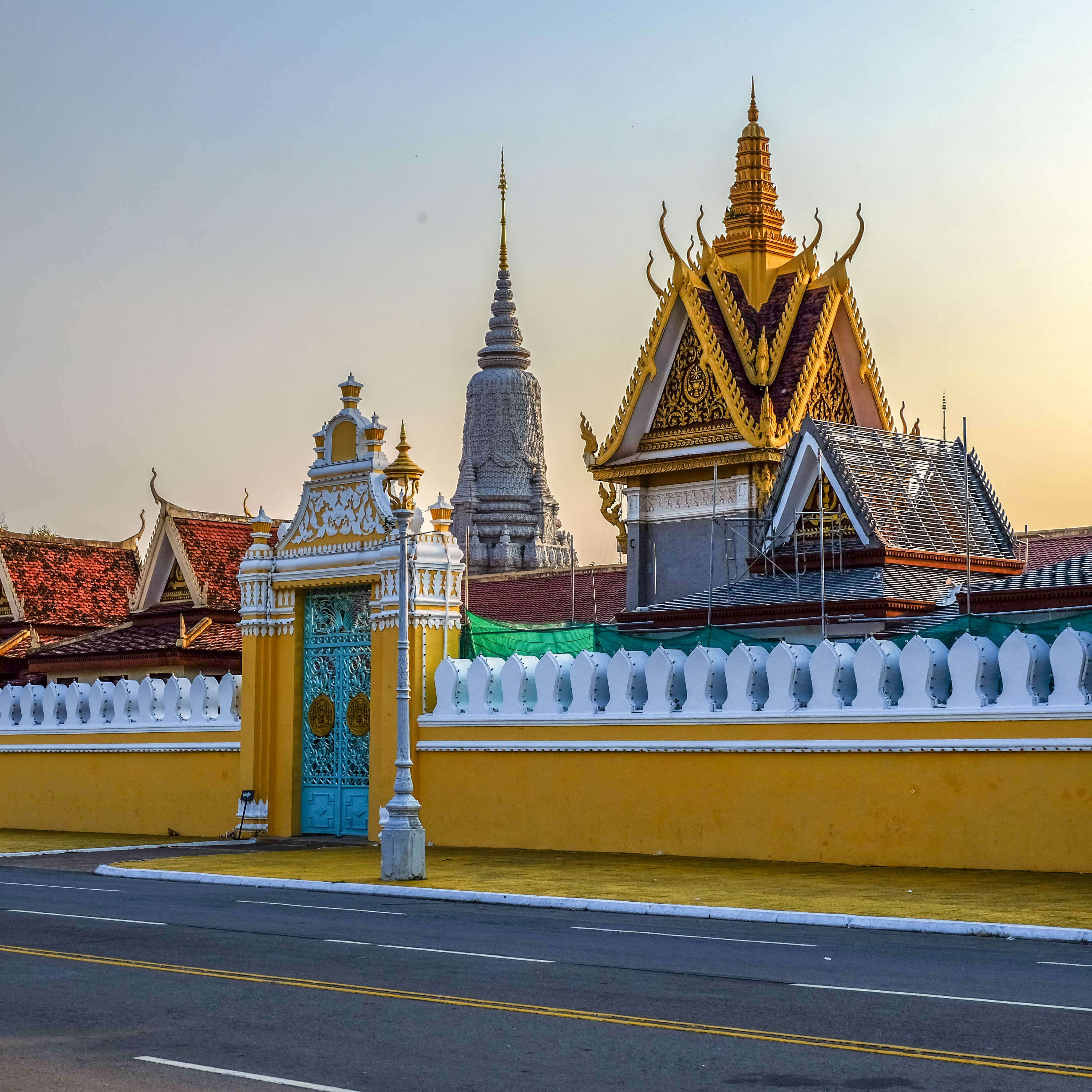
The Palace was originally built in 1865, when Phnom Penh once again became the official capital of the kingdom of Cambodia. From its foundation to nowadays, the building has undergone several changes. The various pavilions were built at different times, demolished or replaced over the years, until approximately the ’50s.
Many of the buildings and pavilions are open to the public, except for the part where the Royal Family still resides today. In fact, the Royal Palace is still the official residence of the King. If the blue flag on the Royal Chapel is up flying, it is a sign that the King is at home.
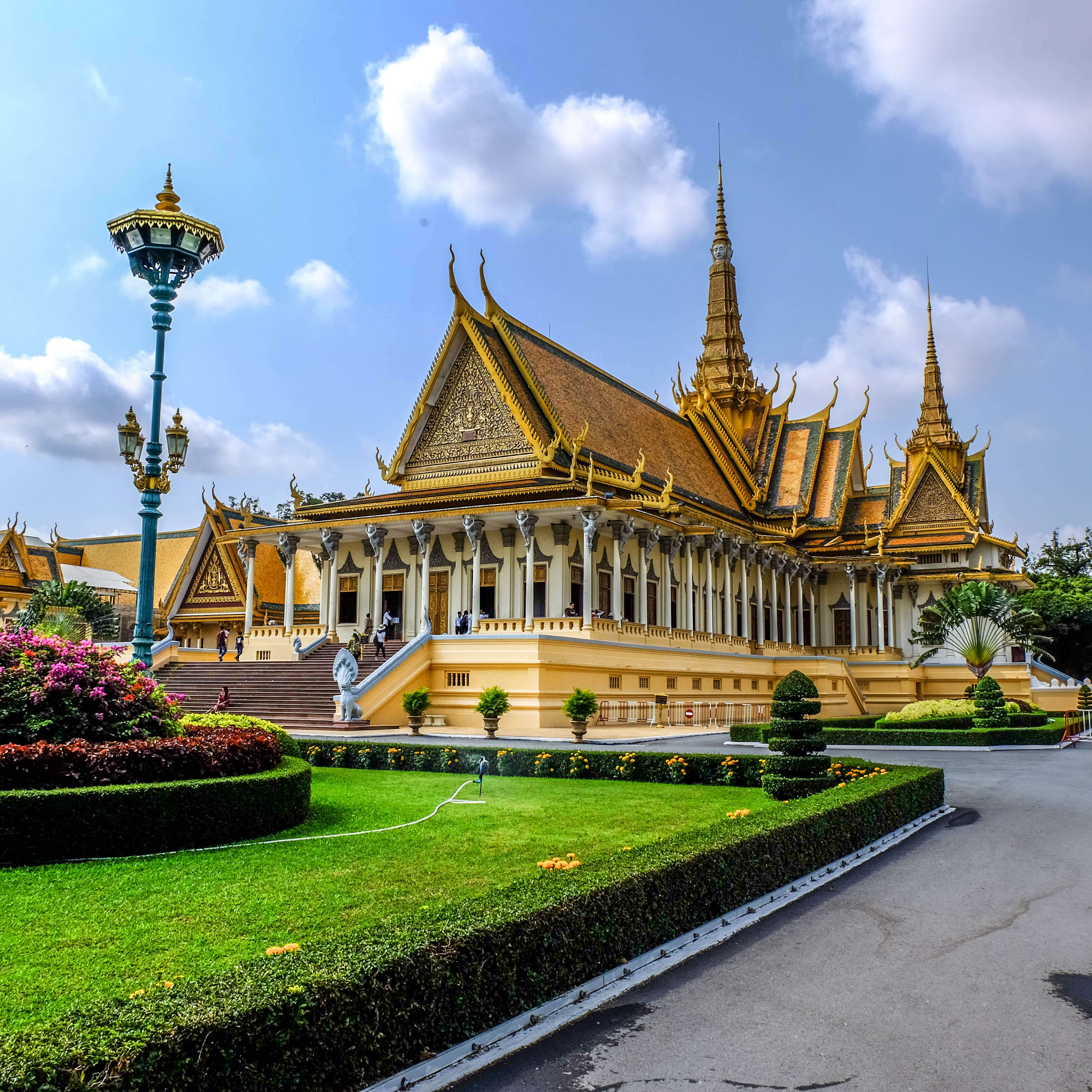

The visitable portion of the complex can be divided into two parts: The Royal Palace and the Silver Pagoda.
The Royal Palace part contains several building. The ones accessible to the visitors are:
– the Throne Hall (mainly used for coronations)
– the Napoleon III Pavillion: made almost entirely of cast iron in 1869, it was sent to Cambodia by Napoleon III as a present to King Norodom in 1876. The pavilion was under restoration during our visit in February 2019 and unfortunately we were not able to see it.
– the Hor Samrn Phirun and the Changchhaya Pavillion (venue for the Royal Dancers and a tribune for the King to address the crowds)
– the Hor Samrith Vimean (display for royal regalia and costumes)
– The Phochani Pavilion (open hall used for royal receptions and meetings)
– the Preah Reach Damnak Chan (hosting the administrative offices, its interiors are closed to the public).
This is the private royal residence, which can be spotted from the columns at the side of the Throne Hall.
PHNOM PENH ROYAL PALACE
The Silver Pagoda complex is situated to the left of the Royal Palace and contains a number of religious buildings and stupas. The most important building, in the middle of the complex is the Silver Pagoda (also called Wat Preah Keo or “Temple of the Emerald Buddha”), which owes its name to the 5329 hand crafted silver tiles covering the floor.
Inside the building there are several Buddhas statues, including the ‘Emerald Buddha’ and the Maitreya Buddha, a golden statue covered with over 2000 diamonds.
This is one of the few temples that survived the Khmer Rouge regime (though part of it was significantly damaged during the Vietnamese invasion).
There are several stupas positioned around the Silver Pagoda, most of them dedicated to Former Kings and Queens.
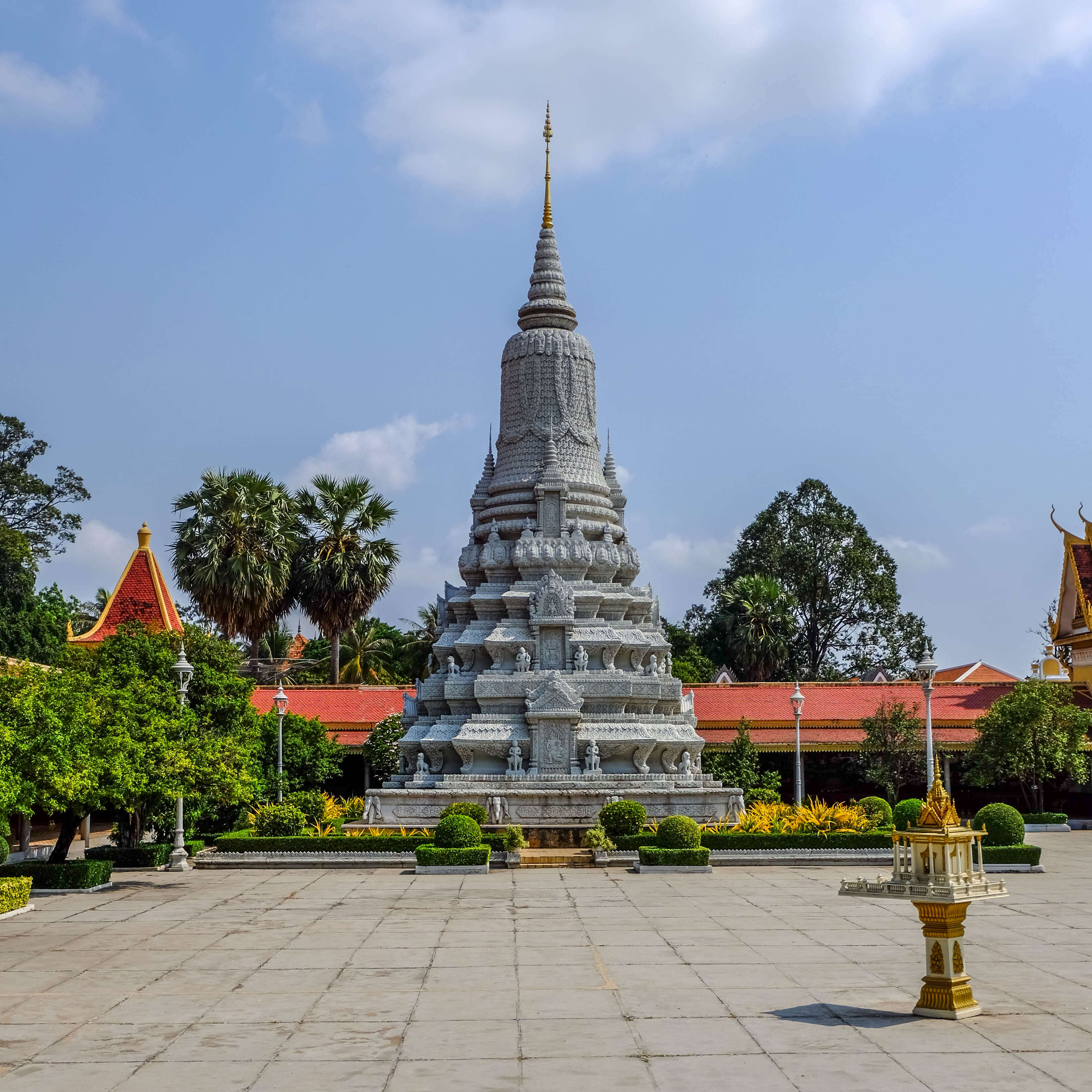
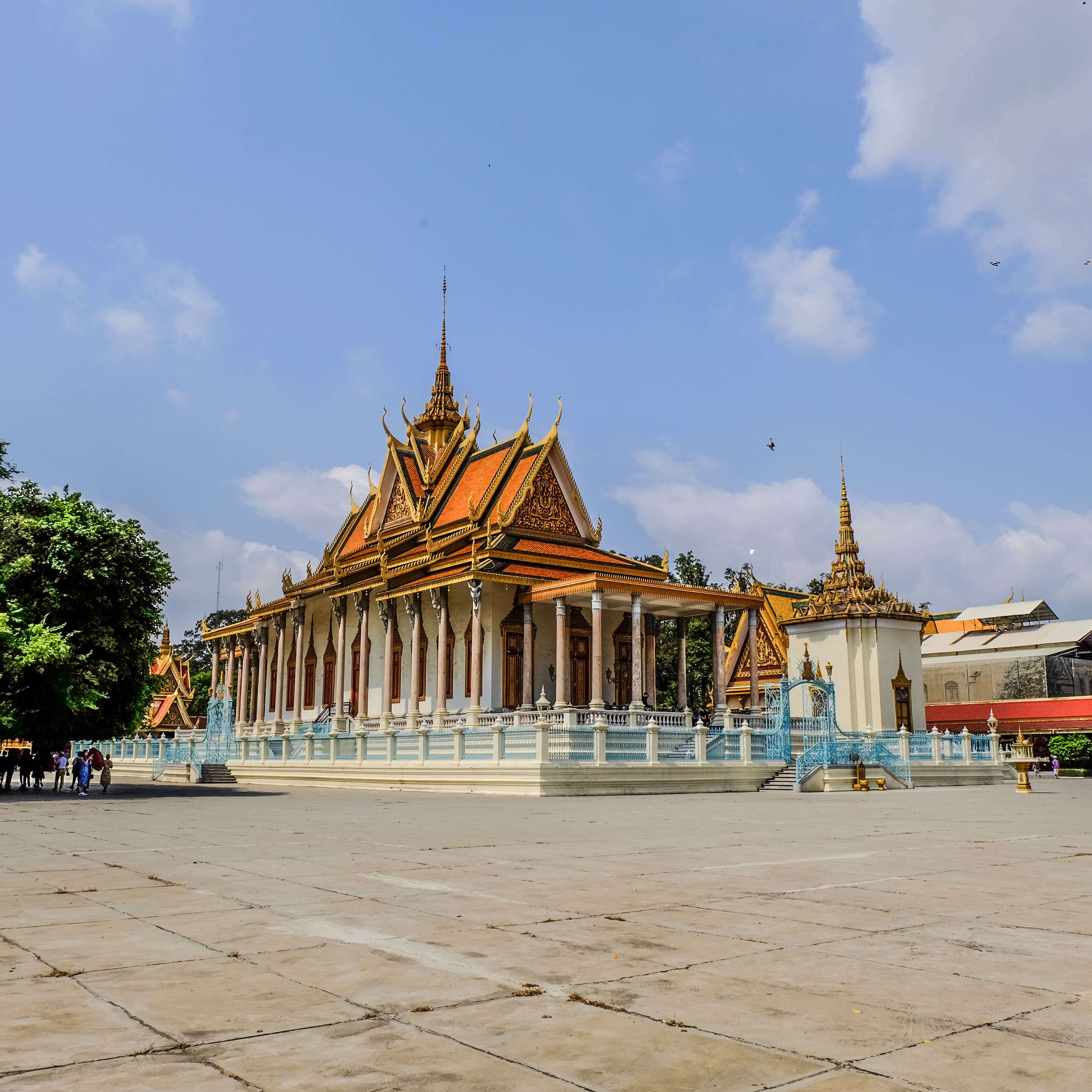
practical tips:
– entrance ticket is 10 USD
– the official opening hours are 0800 -17.30. Around noon the Palace closes for a break and around 11.30 all the public are asked to leave the complex, so it’s better to plan an early start to not get kicked out too fast!
– dress appropriately. Shoulders and knees must be covered, otherwise you will be forced to rent a sarong or buy a t-shirt at the ticket office (speaking from experience).
WAT PHNOM TEMPLE
The Wat Phnom Temple (or “Mountain Temple”) is the most important religious site of the capital, as well as the tallest. Built on a hill, the city itself was named after the iconic temple.


According to local folklore, this temple was first erected to host the shrine of a bronze Buddha Statue that was found in the river by a widow called Penh. The shrine was positioned by Penh on the hill, which became a sanctuary for the villagers.
In 1473, after the King arrived to the newborn city and built his royal palace; he decided to raise the hill even more, naming the new city after it. Phnom Penh translates to “Penh’s hill.”
We visited the temple on Chinese New Year and we found ourselves immersed in the celebrations held by the locals. Hundreds of jubilant people were climbing the hill, making a festive atmosphere.
The entrance to the temple is free for locals who go to pray, while foreign visitors are required to pay a ticket (about $1).
WAT OUNALOM TEMPLE
Relatively close to Phnom Penh Royal Palace, the Wat Ounalom Temple is one of the most important Buddhist religious sites in all of Cambodia. It is in fact, the headquarters for Cambodian Buddhism (and until 1999 was the home of the Buddhist Institute and library), and one of the most ancient temples of the city. Wat Ounalom’s history dates back to the 15th century as one of the 5 monasteries founded at the beginning of Phnom Penh as the capital city. The temple was severely damaged by the Khmer Rouge, and recently has been restored.
In one of the stupa, it is believed that there is an eyebrow hair from Buddha (which gives the name Ounalom, “eyebrow,” to the temple).
At the time of our visit, we were not asked for a ticket.
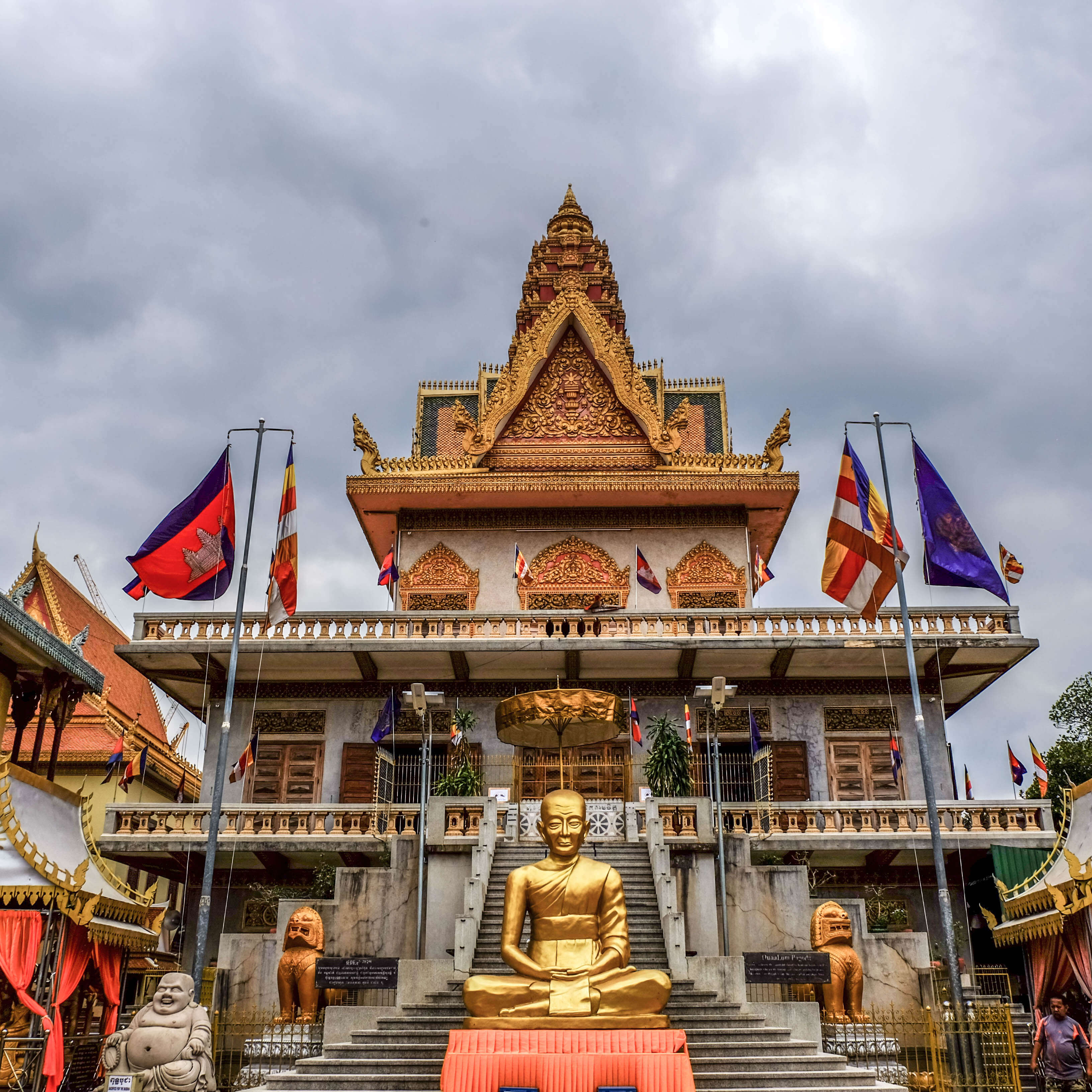
The temples, especially the non-touristy ones, are an oasis of peace in the hustle and bustle of the capital. During our stay we visited several, as we randomly crossed them along our path. Often we were the only visitors, undisturbed and almost guilty to disturb the daily chores of the monks.
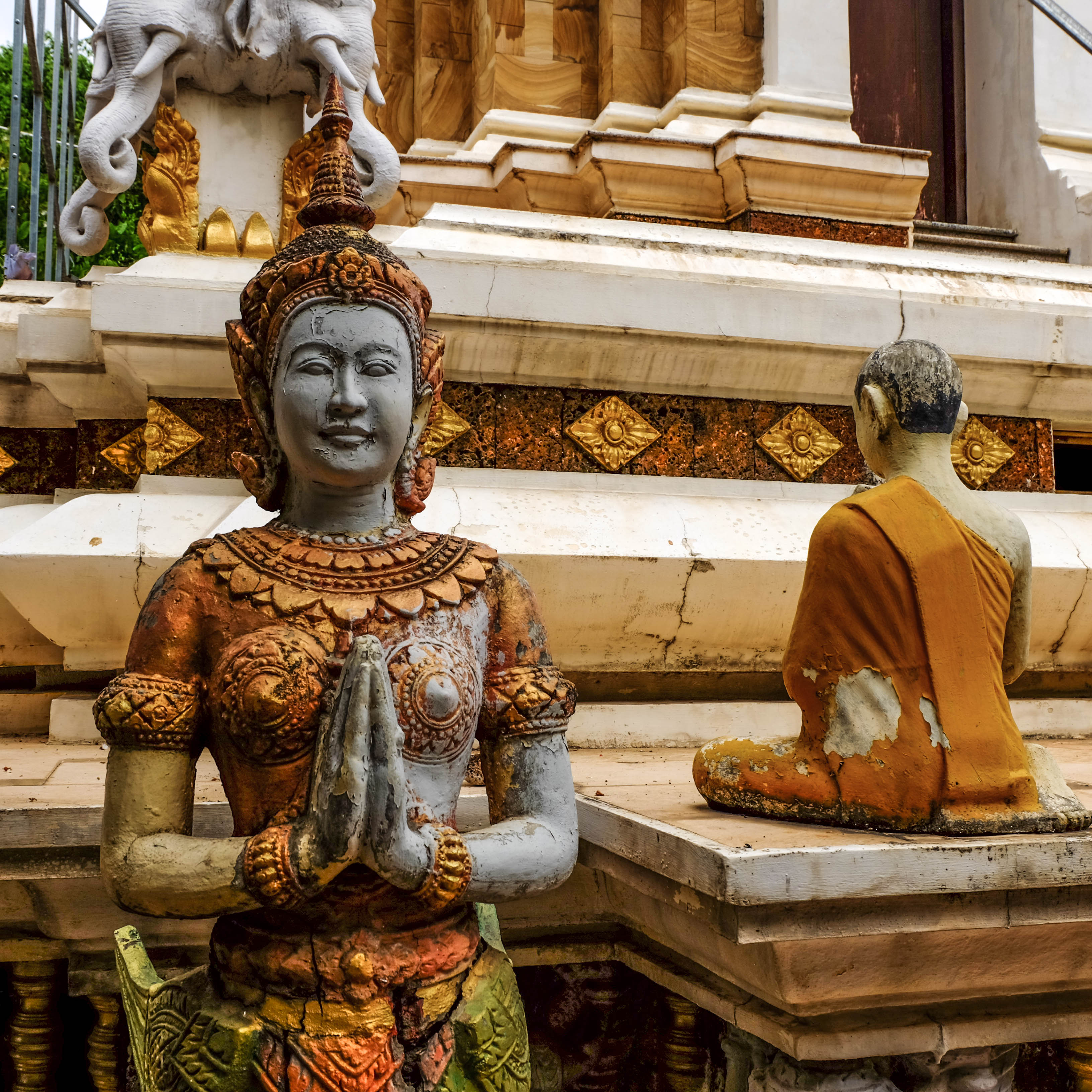
PHNOM PENH NATIONAL MUSEUM
The National Museum of Cambodia hosts the biggest collection of Khmer art in all of the country, hosting over 14,000 items (statues, ceramics, bronzes…).
The terra-cotta colored building was inaugurated during the 20’s, displaying a wide range of Khmer traditional architectural features adapted to the western typology of the museum.
The entrance ticket costs $10, a price considered by many foreign visitors to be a bit expensive, especially considering the modest size and that many pieces of art are similar to what can be admired in the temples of Angkor Wat.
However, it is possible to walk around the building and admire the architecture from the outside without having to buy a ticket (which is what we personally did)!
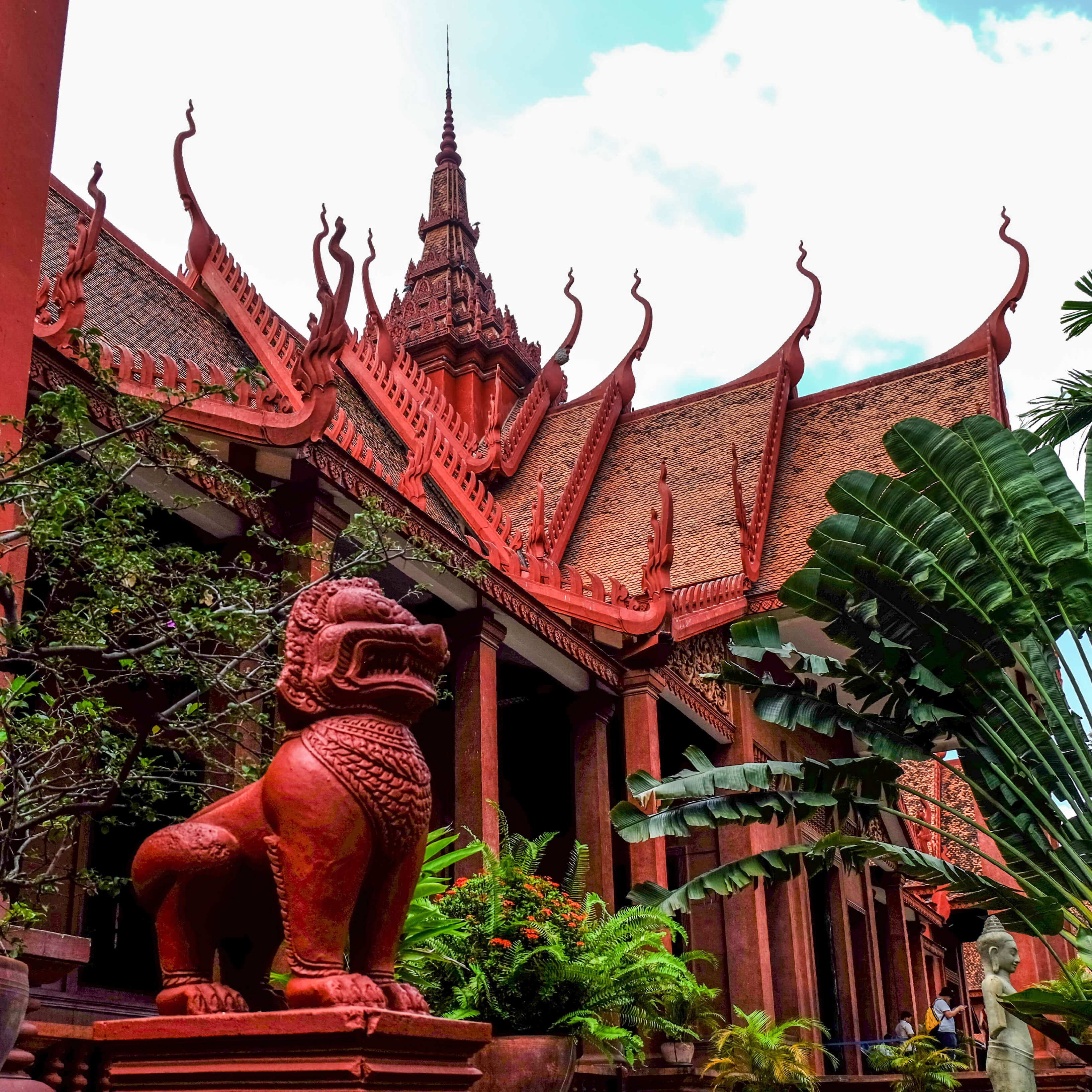
PHNOM PENH FRENCH COLONIAL ARCHITECTURE
The term “Colonial Architecture” defines the architectural style utilized by European countries in their colonial overseas properties. The colonizing countries often exported their national architectural styles to their new lands, especially in Asia and America. These forms, however, have sometimes taken on new characteristics through a fusion of European styles with climatic features, materials, and cultural influences of the colonized country.
Cambodia has been a French colony for almost a century (1864-1953), and the influences of the European architecture are still an apparent feature of many Cambodian cites.
These influences can be found in some elegant public buildings or villas, displayed by classical shapes and decorations, use of colors (especially white and yellow), the use of balconies and porches, and adorned pitched roofs or modernist rounded edges in the compact residential blocks.
Even though Phnom Penh was partially destroyed by the Khmer Rouge, visitors can still admire some of its original, ancient splendor. The city was considered for a long time to be the most beautiful in all of Indochina, earning the name, “The Pearl of Asia,” thanks to its decorated boulevards and beautiful villas.
Most of the colonial, architectural heritage that survived Pol Pot’s regime and modern transformations, can be admired in the oldest and most central part of the city. There are iconic public buildings, such as the General Post Office, Phnom Penh Railway Station, The Central Market, and also some private buildings like the Hotel Le Royal, and the UNESCO Office in Phnom Penh. Many of these representative buildings have been renovated during the years, maintaining a well-groomed appearance.
Traces of the colonial past are also still visible in some residential blocks and shophouses, where a state of neglect adds melancholic, decadent feelings of a past slowly being consumed by the future, seen in many Southeast Asian cities.

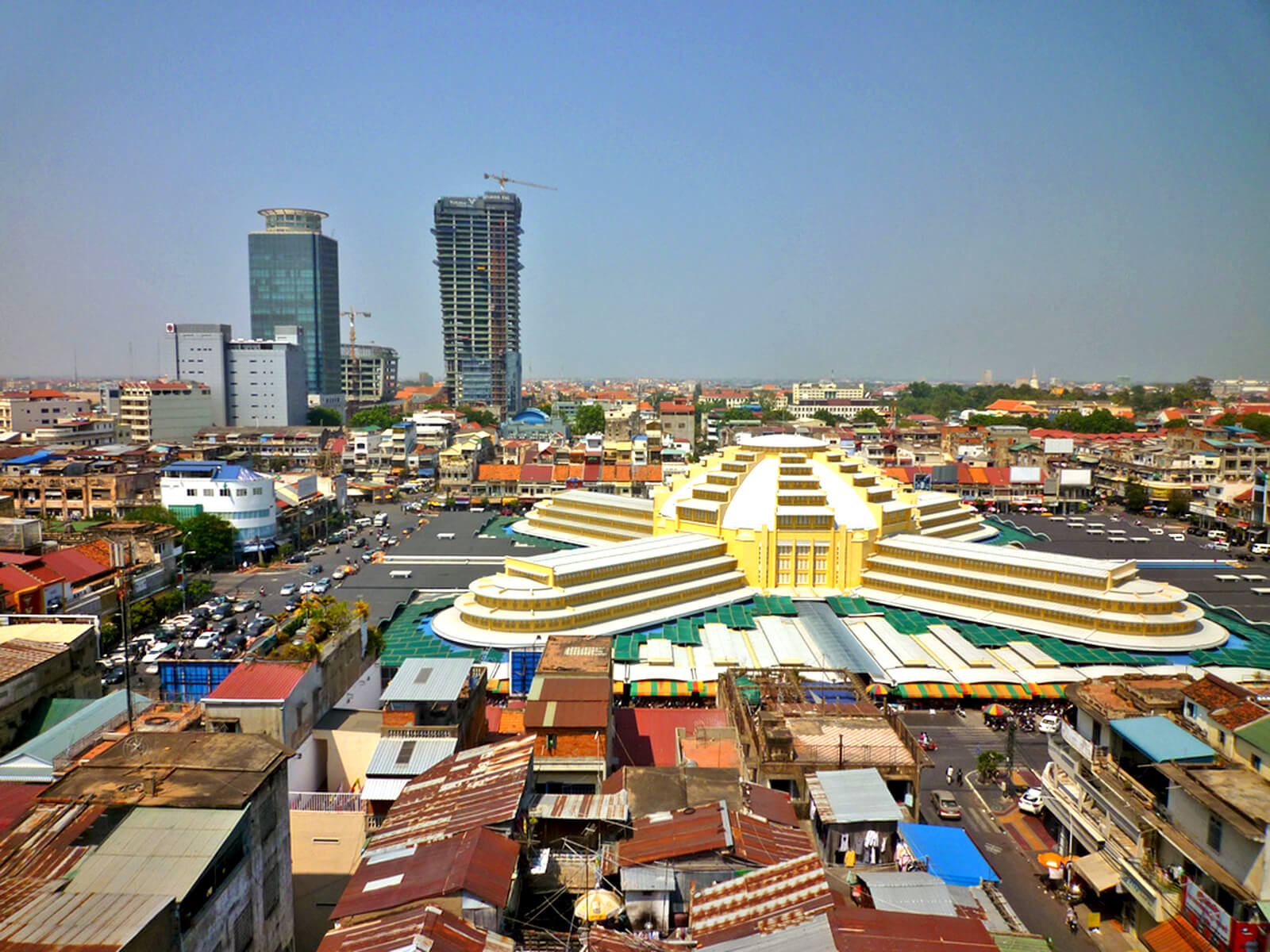

PHNOM PENH SHOPHOUSES
The ‘shophouse’ typology spread from the South of China, becoming very common in many Southeast asian cities. It consists of a narrow two-three story building with commercial activity and market stalls on the ground floor, with the upper floors being used for residences.
In Phnom Penh, shophouses were mainly used from the 1900s to the 60’s, creating an interesting mix of French colonial architecture features.

PHNOM PENH AND THE NEW KHMER ARCHITECTURE MOVEMENT
New Khmer Architecture is defined as an architectural movement which took place during the 1950s and 1960s, during the post-independence “Golden-era.” The style displays some of the traditional shapes and features of the Khmer Architecture, but in a modern way. The results are modernly designed buildings that retain characteristics that are closely related to the Cambodian culture and language. Some of the most representative buildings of this movements are the, Institute of Foreign Languages, the Royal University of Phnom Penh, and the National Sports Complex (to mention just the most famous).
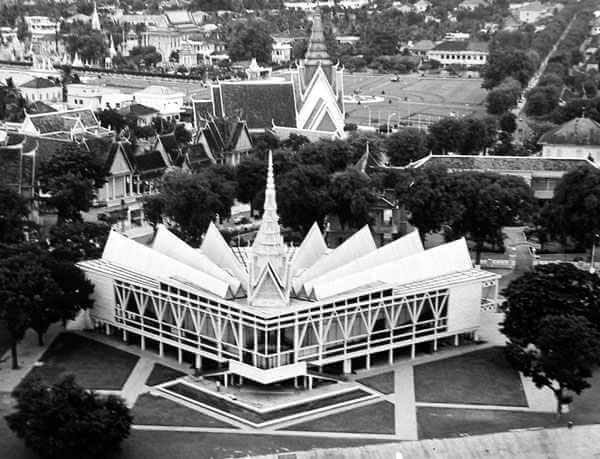
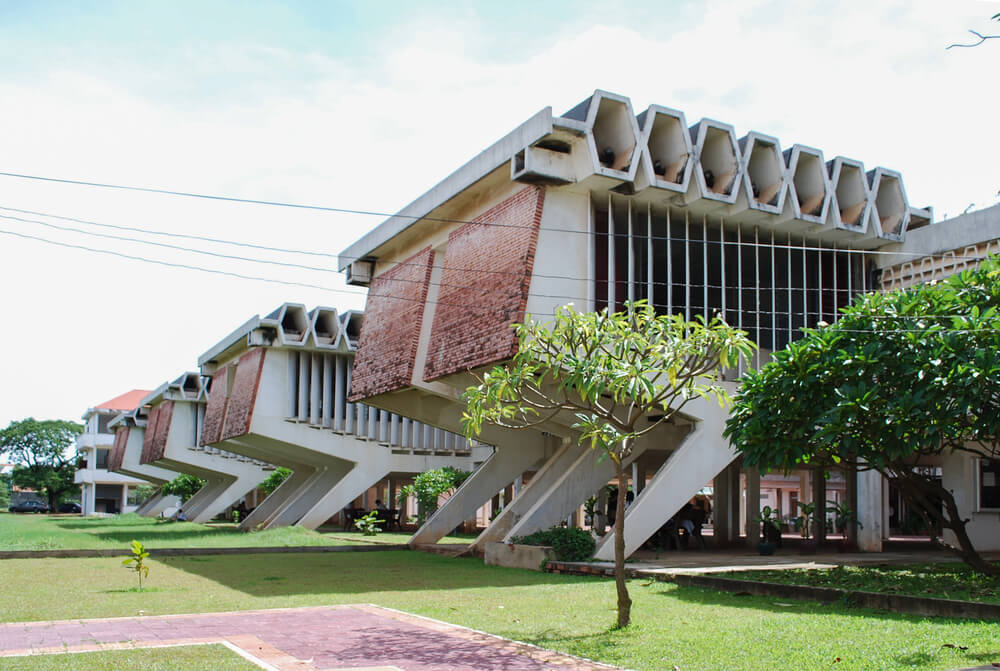
To read more about Vann Molyvann, the architect ‘who built the modern Cambodia’, click here and here!
If you are interested to know more about the New Khmer Architecture and it’s cultural heritage value, i also suggest an interesting related article from the CNN.
To discover the New Khmer Architecture with the help of a local architect guide i recommend the Khmer Architecture Tours, which organizes excellent Tours of Modern Architecture in Cambodia!
http://www.ka-tours.org/
IF YOU FOUND THIS POST INTERESTING AND INSPIRING, HELP ME TO SHARE IT WITH OTHER TRAVELERS!
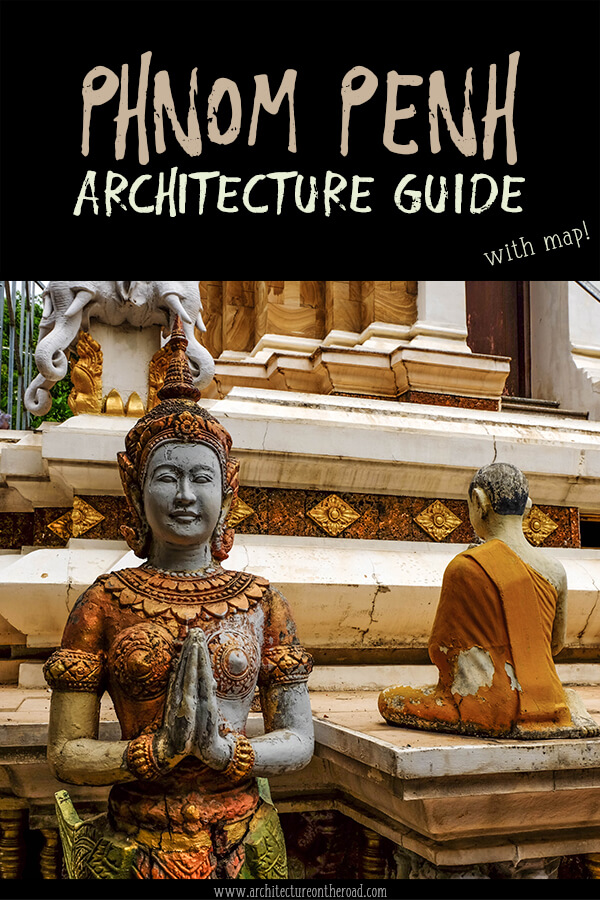
More from Cambodia
stay tuned !
search for a destination
latest travel itineraries
latest Cambodia articles
Text and pictures by
Architecture on the Road ©
Architecture on the Road
All rights reserved
All photographs on this site were taken and are owned by me (unless credited otherwise).
If you would like to use some of these photos for editorial or commercial purposes, many of these are available on Shutterstock (click the link below). Otherwise, please contact me on Instagram, Facebook, or by email.
Do not use my pictures without my written consent. Thank you!

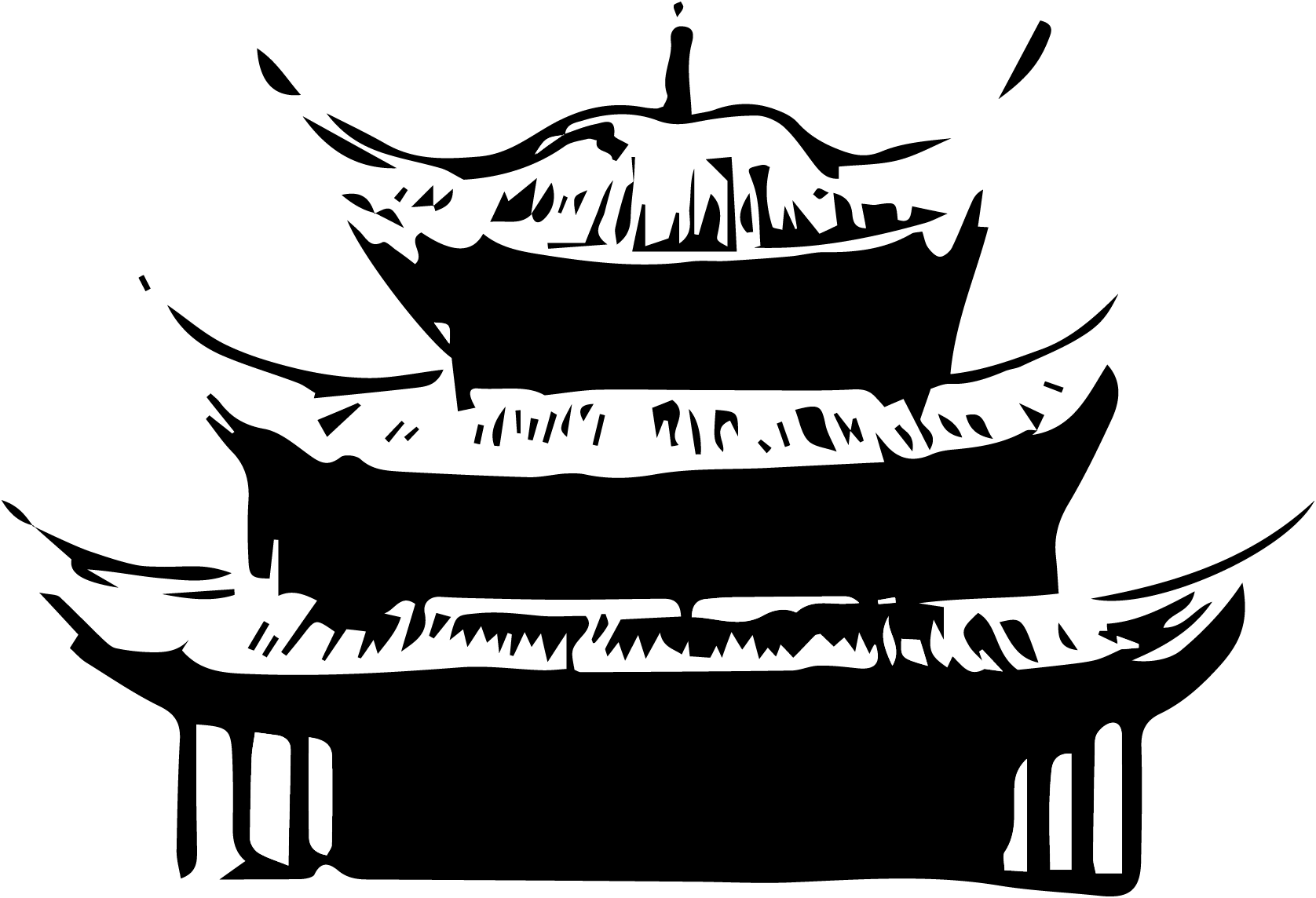
Comments
Grazie per l’interessante ed esaustivo articolo . Ci sono tutti gli elementi per poter visitare la citta’ senza tralasciare nulla!